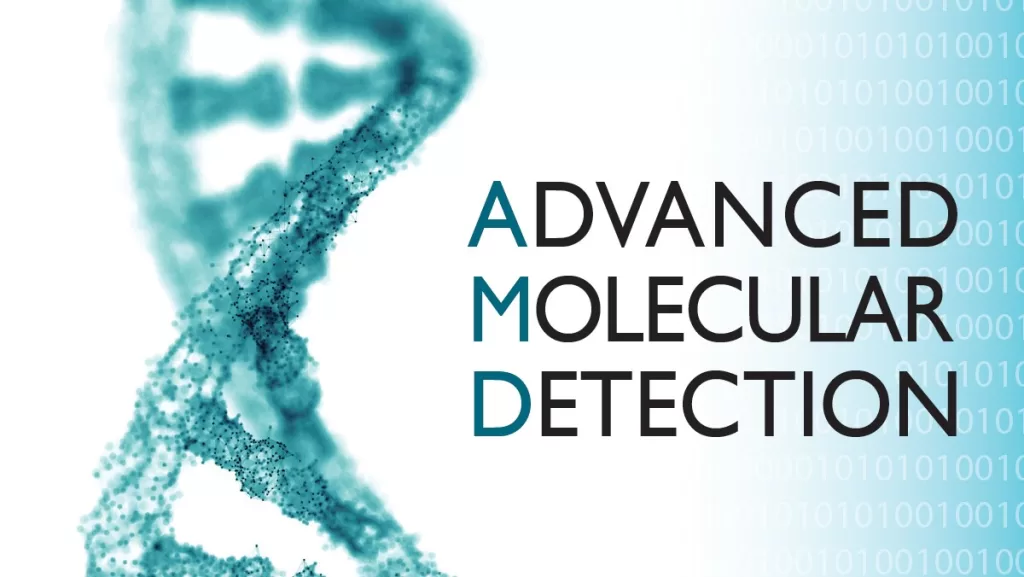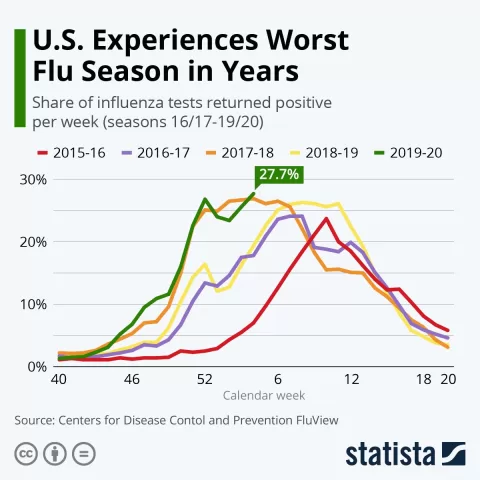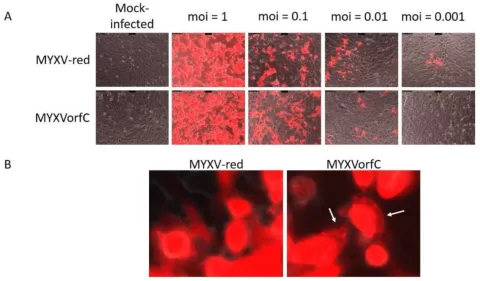Advanced molecular detection is revolutionizing the field of public health technology, providing critical insights into pathogen genomics and enhancing our strategies for infectious disease control. By integrating next-generation sequencing (NGS) and advanced bioinformatics, this innovative approach is not only streamlining the process of identifying disease-causing microorganisms but also enabling healthcare professionals to respond swiftly to emerging health threats. As public health agencies increasingly adopt these sophisticated techniques, the ability to track and combat outbreaks has improved significantly. This article aims to demystify the principles of advanced molecular detection for healthcare providers and policymakers, ensuring they are equipped with the knowledge to apply these methods effectively. Understanding these advanced methodologies will empower professionals to contribute to national and global efforts in disease surveillance and outbreak management through informed decision-making.
The field of modern pathogen detection encompasses various advanced methodologies that enhance our ability to identify and combat infectious diseases. Often referred to as molecular diagnostics or genomic surveillance, these sophisticated techniques combine cutting-edge technology with analytical tools from bioinformatics in healthcare. They offer robust solutions for disease identification, management, and tracking, thus playing a pivotal role in public health strategies. By leveraging next-gen sequencing along with comprehensive data analysis, healthcare professionals are better equipped to analyze infectious disease outbreaks and implement timely responses. This paper underscores the critical importance of these advanced detection technologies and their application across diverse public health scenarios.
Understanding Advanced Molecular Detection
Advanced molecular detection (AMD) represents a significant leap forward in the realm of infectious disease control. This approach integrates various cutting-edge technologies, particularly next-generation sequencing (NGS), to provide a comprehensive view of the genetic makeup of pathogens. By leveraging AMD, healthcare and public health professionals can identify microorganisms with unprecedented accuracy and speed. The integration of pathogen genomics into disease tracking ensures that outbreaks can be monitored in real-time, providing critical data that informs public health responses.
In a world where infectious disease threats are continually evolving, the need for rapid identification tools is vital. AMD facilitates this by utilizing new technologies and bioinformatics to streamline the data analysis process, allowing for quicker decision-making in public health contexts. As policymakers and healthcare providers engage with these advanced methodologies, understanding the basic principles of AMD becomes essential to effectively utilize these advancements in practice. This insight will be particularly beneficial for those outside laboratory environments.
The Role of Pathogen Genomics in Public Health
Pathogen genomics plays a pivotal role in the landscape of public health technology. By examining the complete genetic material of pathogens, health professionals can identify mutations that may influence virulence or resistance to treatments. This understanding can lead to the rapid creation of diagnostic tools and vaccine development strategies tailored to specific outbreaks. The ability to perform genome sequencing through advanced techniques such as NGS allows for quick identification of the pathogens responsible for infectious diseases, enhancing the effectiveness of response strategies in real-time.
The insights gained from pathogen genomics significantly enhance the existing frameworks for infectious disease control. As more genetic data becomes available, it enriches disease surveillance efforts and informs better public health policies. For instance, tracking genetic variations across populations can help in understanding the epidemiology of diseases and the development of targeted interventions. This genomic data is essential not only for immediate public health responses but also for anticipating future infectious disease threats.
Advancing Bioinformatics in Healthcare
Bioinformatics serves as the backbone of advanced molecular detection, enabling the management and analysis of vast amounts of genetic data produced by next-generation sequencing. By employing computational tools and algorithms, bioinformatics professionals can extract meaningful insights from complex datasets. This data-driven approach ensures that public health entities can respond promptly to infectious disease outbreaks, utilizing machine learning techniques to anticipate transmission patterns and identify at-risk populations.
Moreover, the growing synergy between bioinformatics and traditional epidemiology provides a robust framework for understanding disease spread. As healthcare providers adopt these technologies, they can leverage real-time data for disease surveillance, enhancing their ability to mitigate outbreaks effectively. This holistic view underscores the importance of incorporating bioinformatics into healthcare practices, fostering a proactive approach to public health.
Public Health Applications of Advanced Molecular Detection
Advanced molecular detection has transformed public health applications, facilitating quicker and more accurate responses to infectious diseases. The integration of AMD within disease surveillance systems represents a paradigm shift, allowing public health officials to track and mitigate disease spread more effectively. This technology empowers agencies to manage outbreaks by identifying not only the causative agent but also its genetic characteristics, which can impact transmissibility and virulence.
Furthermore, the incorporation of AMD into routine public health practices enhances drug resistance monitoring, contributing to more informed choices in antibiotic usage. By understanding the genetic makeup of resistant strains, health organizations can develop targeted treatment strategies and reduce the incidence of resistant infections. As AMD continues to evolve, its influence on public health frameworks will be crucial for achieving effective disease control in diverse populations.
Exploring Next-Generation Sequencing Technologies
Next-generation sequencing (NGS) stands at the forefront of advanced molecular detection, radically transforming how infectious diseases are diagnosed and studied. Unlike traditional sequencing methods, NGS allows for the rapid sequencing of millions of DNA strands simultaneously, yielding vast amounts of data in a fraction of the time and cost. This ability to handle large datasets is crucial for public health officials aiming to trace disease outbreaks back to their sources effectively.
Additionally, NGS technologies facilitate the monitoring of pathogens in various environments, providing insights into microbial diversity and evolution. By analyzing genetic variations among pathogens, researchers can identify emerging threats and adapt public health responses accordingly. The ongoing evolution of NGS technology promises to further enhance capabilities in pathogen tracking and outbreak response, ensuring that public health systems have the tools necessary to tackle complex infectious disease challenges.
Integrating Bioinformatics with Public Health Strategy
The integration of bioinformatics into public health strategies is paramount for enhancing the effectiveness of disease surveillance and outbreak response initiatives. By employing sophisticated computational tools, public health professionals can rapidly analyze genomic data generated by advanced molecular detection methods. This integration allows for immediate insights into transmission dynamics, helping authorities to implement timely and targeted interventions.
Moreover, bioinformatics facilitates collaboration among researchers and public health officials, enabling the sharing of data and findings across various institutions. This collaborative environment is crucial for addressing global health challenges, such as identifying zoonotic pathogens that may emerge from animal reservoirs. A well-coordinated bioinformatics framework thus not only supports current public health efforts but also builds resilience against future threats.
Empowering Policymakers with Advanced Molecular Detection
Policymakers play a critical role in the implementation of advanced molecular detection technologies within public health systems. By understanding the implications of AMD, they can allocate resources effectively and support relevant research initiatives. This understanding is essential for crafting informed public health policies that capitalize on the advantages of pathogen genomics and bioinformatics to combat infectious diseases.
In addition, policymakers must engage with public health professionals to ensure that advanced technologies are accessible and practical for frontline workers. By fostering a collaborative atmosphere between technology developers and end-users, the full potential of AMD can be realized. This empowerment ensures that responses to infectious disease threats are not only swift but also grounded in scientific evidence, ultimately safeguarding public health.
Collaboration in Infectious Disease Control
Collaboration among various stakeholders, including researchers, healthcare providers, and public health officials, is vital for the successful application of advanced molecular detection in infectious disease control. By sharing expertise and resources, these groups can create a robust framework for addressing public health challenges. Such partnerships enhance the dissemination of knowledge regarding pathogen genomics and bioinformatics, ensuring that all sectors involved in public health are equipped to respond effectively.
Furthermore, collaborative efforts foster innovation, paving the way for new technologies and methodologies that can improve disease tracking and management. By embracing teamwork, the gaps between laboratory findings and public health applications can be bridged, leading to more cohesive strategies for combatting infectious diseases. This collaborative model not only enhances immediate responses but also sets the stage for long-term advancements in public health.
Future Directions in Advanced Molecular Detection
The future of advanced molecular detection holds great promise for improving infectious disease control measures. As technological advancements continue, the integration of artificial intelligence with bioinformatics and sequencing technologies will likely lead to more accurate predictions and quicker response times for public health authorities. The goal is to develop systems that can not only detect pathogens but also provide predictive analytics based on current outbreaks, allowing for proactive measures.
Moreover, ongoing research in pathogen genomics is expected to unveil deeper insights into organism behavior and disease transmission. These insights will be critical for developing targeted therapies and preventive measures that can mitigate the impacts of infectious diseases on public health. As we move forward, the continued investment in AMD technologies will ensure that healthcare systems are adequately prepared to face future infectious disease challenges.
Frequently Asked Questions
What is advanced molecular detection and how does it relate to pathogen genomics?
Advanced molecular detection (AMD) refers to the integration of next-generation sequencing (NGS), bioinformatics, and traditional epidemiology to analyze disease-causing microorganisms. Pathogen genomics, a key component of AMD, involves sequencing and analyzing the genetic material of pathogens to identify and track infectious diseases more effectively.
How does bioinformatics enhance the capabilities of advanced molecular detection in public health?
Bioinformatics plays a crucial role in advanced molecular detection by processing and analyzing the vast amounts of data generated by NGS. It uses computational tools to identify pathogens, monitor disease outbreaks, and understand transmission dynamics, thereby improving public health responses to infectious disease threats.
What advancements in public health technology have been made through the implementation of advanced molecular detection?
Public health technology has evolved significantly with the adoption of advanced molecular detection, enabling rapid identification of pathogens and more efficient outbreak response. This includes improved disease surveillance, drug resistance monitoring, and enhanced capabilities to detect previously undetectable infectious diseases.
Why is next-generation sequencing important in the field of advanced molecular detection?
Next-generation sequencing (NGS) is important in advanced molecular detection because it allows for rapid, high-throughput sequencing of pathogens’ genomes. This technology provides extensive genetic data that can be analyzed for effective infectious disease control, influencing both clinical practices and public health strategies.
How can public health professionals utilize advanced molecular detection to control infectious diseases?
Public health professionals can utilize advanced molecular detection by employing technologies like next-generation sequencing and bioinformatics to identify and track pathogens during outbreaks. This leads to timely detection of infections, monitoring of transmission patterns, and informs targeted response strategies to control and prevent the spread of diseases.
What role does the CDC play in advancing molecular detection for public health?
The Centers for Disease Control and Prevention (CDC) plays a pivotal role in advancing molecular detection by incorporating these technologies into public health programs. The CDC’s Office of Advanced Molecular Detection focuses on modernizing disease investigation capabilities, enhancing surveillance efforts, and supporting public health institutions in implementing AMD strategies for effective infectious disease control.
In what ways does advanced molecular detection support infectious disease management?
Advanced molecular detection supports infectious disease management by providing in-depth genomic insights into pathogens, which aids in outbreak identification and response. It enhances traditional epidemiological methods through rapid sequencing and bioinformatics, allowing for more accurate tracking and control measures.
What educational resources are available for nonlaboratorians to understand advanced molecular detection?
Several educational resources are available for nonlaboratorians, including workshops, online courses, and journal supplements focusing on advanced molecular detection terminology and concepts. These resources aim to bridge the knowledge gap for healthcare providers and public health professionals, helping them effectively apply AMD in their work.
What are the benefits of integrating pathogen genomics into public health surveillance systems?
Integrating pathogen genomics into public health surveillance systems offers numerous benefits, including enhanced accuracy in identifying pathogens, improved tracking of disease outbreaks, and the ability to monitor genetic changes in pathogens, such as drug resistance. This integration ultimately leads to more effective public health interventions.
What challenges do nonlaboratorians face in understanding advanced molecular detection?
Nonlaboratorians often face challenges such as the complexity of technical terminology, variability in data interpretation, and the rapid evolution of molecular technologies in advanced molecular detection. Access to clear educational resources and ongoing training can help mitigate these challenges and improve understanding.
| Aspect | Description |
|---|---|
| Pathogen Genomics | Utilizes NGS for rapid and cost-effective genome sequencing of pathogens, moving beyond traditional methods like Sanger sequencing. |
| Bioinformatics | Combines sequencing data with computational tools and AI to enhance disease surveillance and outbreak response. |
| Public Health Application | Integrates AMD into public health protocols for outbreak identification, disease surveillance, and monitoring drug resistance. |
Summary
Advanced molecular detection (AMD) is transforming public health by enhancing our capacity to identify and understand infectious diseases. By leveraging cutting-edge technologies like next-generation sequencing, bioinformatics, and traditional epidemiological strategies, AMD equips healthcare professionals and policymakers with critical tools needed to combat public health threats. This roadmap serves as a vital resource for nonlaboratorians, emphasizing key domains of AMD to ensure an effective response to disease outbreaks. As the landscape of infectious disease management evolves, AMD stands as a crucial ally in safeguarding public health.
The content provided on this blog (e.g., symptom descriptions, health tips, or general advice) is for informational purposes only and is not a substitute for professional medical advice, diagnosis, or treatment. Always seek the guidance of your physician or other qualified healthcare provider with any questions you may have regarding a medical condition. Never disregard professional medical advice or delay seeking it because of something you have read on this website. If you believe you may have a medical emergency, call your doctor or emergency services immediately. Reliance on any information provided by this blog is solely at your own risk.








